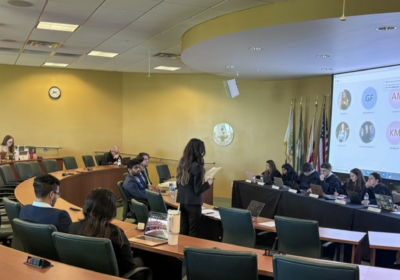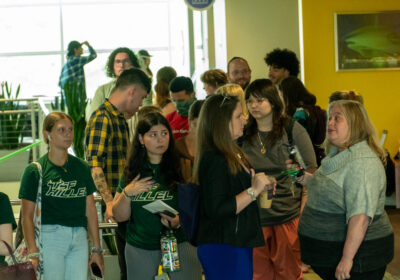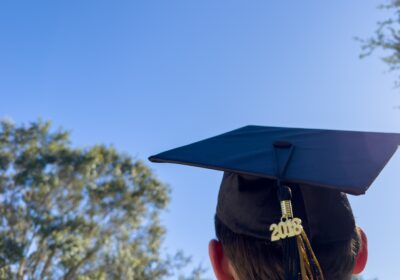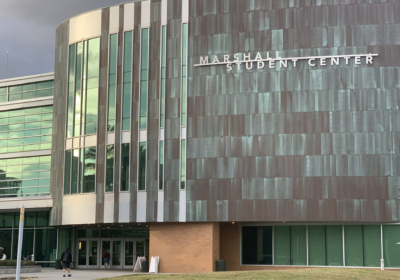Personal prints
Students in the USF art department are using visual art to address bold and controversial ideas.
Through USF’s School of Art and Art History’s printmaking program, students are learning the printmaker’s place in society and their artwork’s role as a form of communication.
Three instructors in the program are doing that through their lesson plans and an art exhibit on display at the William and Nancy Oliver Gallery, “Bon A Tirer: USF Printmakers.”
Printmaking has facilitated social activism, including graphic advertisements promoting a “greener” world and Shepard Fairey’s poster promoting President Barack Obama’s campaign. These were created in an effort to inspire change.
Students from all three classes give their own perspective on social topics through pieces they create. The topics focus on a broad range of subjects, including personal views and controversies. Everything from swine flu to sexuality is represented.
“We really wanted to showcase printmaking and the effect it has had on social activism,” said Bruce Monroe, one of the professors involved in the exhibit. “There is at least a piece in the show that everyone in the University can relate to.”
The gallery is almost empty except for the row or student work that stands out in contrast to the white walls.
In a piece called “Youth = immortality,” created by fourth-year architecture major Sam Kuhn, there is a sketch of an elderly man sitting by “the tree of life in autumn.” The roots extend down and spell the word “youth,” and the man holds a kite as his cane and a cross fall into oblivion.
“The picture itself may not be bold, but the ideas are,” he said.
The elderly man represents old age in society, Kuhn said, but his actions are far from that of a dying man. He is tossing away his old age – the cane. The cross represents religion and the afterlife.
“Since humans are mortal, it is not the person that is immortal but the idea of youth,” he said.
As a child, Kuhn said he often climbed trees and flew kites, and the process of reminiscing on these things is what keeps him young.
“In my opinion, something has to be temporary in order for it to be enjoyed,” he said.
David Gabbard, a senior majoring in studio art with a concentration in painting, focused his artwork on a notorious comic from the ’50s, “EC Comics.”
“There is not much difference between the 1950s comics and now – both are showing graphics that are warping the minds of children today,” Gabbard said.
The piece was created through a technique called appropriation, or taking an image that already exists and making it different.
Gabbard used a panel of the ’50s comic, which involved a man hanging from a noose, and changed the graphic and color scheme to red and yellow, representing McDonald’s colors. He replaced the character in the comic with Ronald McDonald.
“Since the ’50s, fast food has been a commodity in our culture,” he said. “It has broken down family life and makes things cheap and easy.”
This type of social degradation is represented in most of the work Gabbard does. He said this is part of a series of work he has done about Ronald McDonald and similar ideas.
The students will also put up posters of their work around campus to see other students’ reactions.
“This show is great. It features about 40 students’ artwork – anywhere from students who have never printed to students who are really familiar with it,” Gabbard said. “This exhibit is a great representation of the printmaking department.”
The gallery is open from 11 a.m. to 3 p.m., and the exhibit will be on display until Friday. A reception will be held Friday from 7 to 9 p.m., with free food and beverages.






